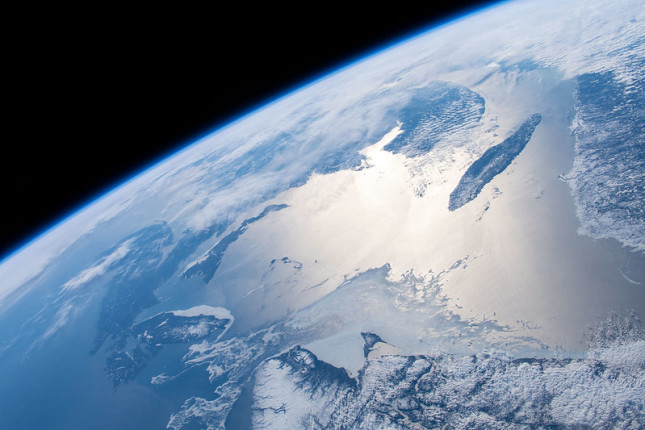-
Elizabeth L. Chalecki, The Internationalist
An Internationalism that Protects: Why We Need to Reboot the Baruch Plan for Geoengineering
March 26, 2021 By Wilson Center Staff
New planet-changing geoengineering technology is available to help humanity combat an existential security threat. However, like atomic fission, this technology is not to be jumped at without caution.
This year is the seventy-fifth anniversary of the Baruch Plan. Almost no one knows this, or if they do, they probably don’t remember who Bernard Baruch was, or what his eponymous plan was for. But the Baruch Plan of 1946 was our first and last real attempt at world governance of nuclear weapons. Three-quarters of a century later, the ill-fated effort carries important lessons for addressing the crisis of climate change.
The scientists who worked on the Manhattan Project were excited about the post-war industrial prospects of atomic technology, which they saw as manifold. But they also had serious misgivings about its continued development as a weapon, misgivings which they repeatedly brought to the U.S. government’s attention. So they proposed a new governance regime with the ambitious goal of ending all wars. On June 4, 1946, the financier and statesman Bernard Baruch, serving as U.S. ambassador to the United Nations Atomic Energy Commission (UNAEC), proposed this scheme to the world.
The Baruch Plan, derived from the Acheson-Lilienthal Report, laid out three characteristics of atomic weapons that made governing this technology unlike any previous arms control challenge. First, the technology was more powerful than any other weapon in existence. It only took one bomb to wipe out a city and two to force the end of a six-year world war. Second, there were no defenses or countermeasures against atomic weapons. Anti-aircraft systems of the time were unlikely to bring down a solo plane, and the destructive radius of an atomic bomb meant that civilians would have no time to flee an attack. Third, there was no longer any secrecy surrounding the bomb, at least among major powers. American, British, Canadian, and French scientists had worked on various facets of atomic technology during the war, and by 1945, Germany, Japan, and the Soviet Union all had their own experiments underway.
The Baruch Plan proposed that all atomic weapons be placed under the control of the United Nations, which would oversee all peacetime research into the field the physicists called nucleonics. In addition, participating countries would be subject to UN inspections to make sure they were not violating the plan by making their own atomic weapons secretly. In presenting this international governance arrangement to the UNAEC, Baruch said, “The peoples…are not afraid of an internationalism that protects; they are unwilling to be fobbed off by mouthings about narrow sovereignty, which is today’s phrase for yesterday’s isolation.” Unfortunately, Baruch’s warning went unheeded. The United States and the Soviet Union could not agree on vital matters of inspections and control, and the plan was not adopted. Narrow sovereignty carried the day.
Why is an unsuccessful arms control agreement relevant seventy-five years later? Because once again we need to learn this same lesson: new planet-changing technology is available to help humanity combat an existential security threat—that of anthropogenic climate change. New technologies are becoming available that will permit commons-based geoengineering (CBG), or the deliberate manipulation of Earth’s climate in the global commons, including through stratospheric aerosol injection, ocean iron fertilization, and marine-based cloud brightening. However, like atomic fission, this technology is not to be jumped at without caution. It could be used to tweak the climate to the advantage of a country or region or disadvantage a rival, and in doing so, force the nations of the world to reconsider the very concepts of borders and sovereignty.
Continue reading on The Internationalist.
Sources: Atomic Archive, Atomic Heritage Foundation, Council on Foreign Relations, George C. Marshall Foundation.
Photo Credit: Canada’s sun glint-lit Gulf of St. Lawrence and its coastal states of Nova Scotia, New Brunswick, Prince Edward Island, and portions of Newfoundland, courtesy of Flickr User NASA Johnson.
 A Publication of the Stimson Center.
A Publication of the Stimson Center.



